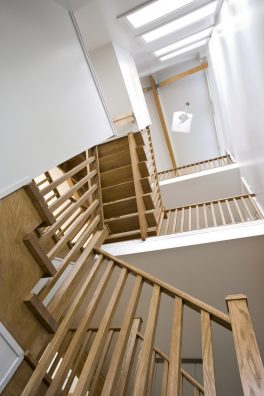Net Zero Energy Buildings
Construction of net zero energy buildings (NZEB) has become more widespread in past years, resulting from increased understanding of concepts and many built examples to draw knowledge from. An NZEB is a building with greatly reduced operational energy needs and which, on an annual basis, produces enough renewable energy onsite to meet its own demand. Typically, an NZEB is connected to the grid or other energy networks so that energy can be drawn from the grid when onsite production is insufficient, and fed back to the grid when there is an energy production surplus. Individual net zero energy homes offer important environmental and infrastructure benefits by reducing consumption of fossil fuels and associated greenhouse gas emissions. In some cases, communities of net zero houses and buildings can be designed with scaled down water and energy infrastructure due to their lower demands, resulting in significant cost savings.
Designing an NZEB requires optimization of how energy is used and generated onsite. This is achieved through careful design that adopts a wide range of innovative and accepted techniques, technologies and products. Some examples of how energy efficiency and conservation can be achieved are the implementation of high performance building envelopes, daylight optimization, windows and glazing, passive solar heating, natural ventilation, building automation, radiant heating and cooling, heat and energy recovery ventilators, drain water heat recovery, air and ground source heat pumps, and efficient lighting and appliances. Renewable energy can be generated onsite in many ways, including photovoltaics, wind turbines, solar thermal systems, air source heat pumps, and geoexchange systems.
The implementation and evaluation of renewable and energy efficient technologies and techniques is a large component of the work that STEP conducts. The knowledge produced by this research helps foster the widespread implementation of these technologies in both conventional and net zero energy buildings.

